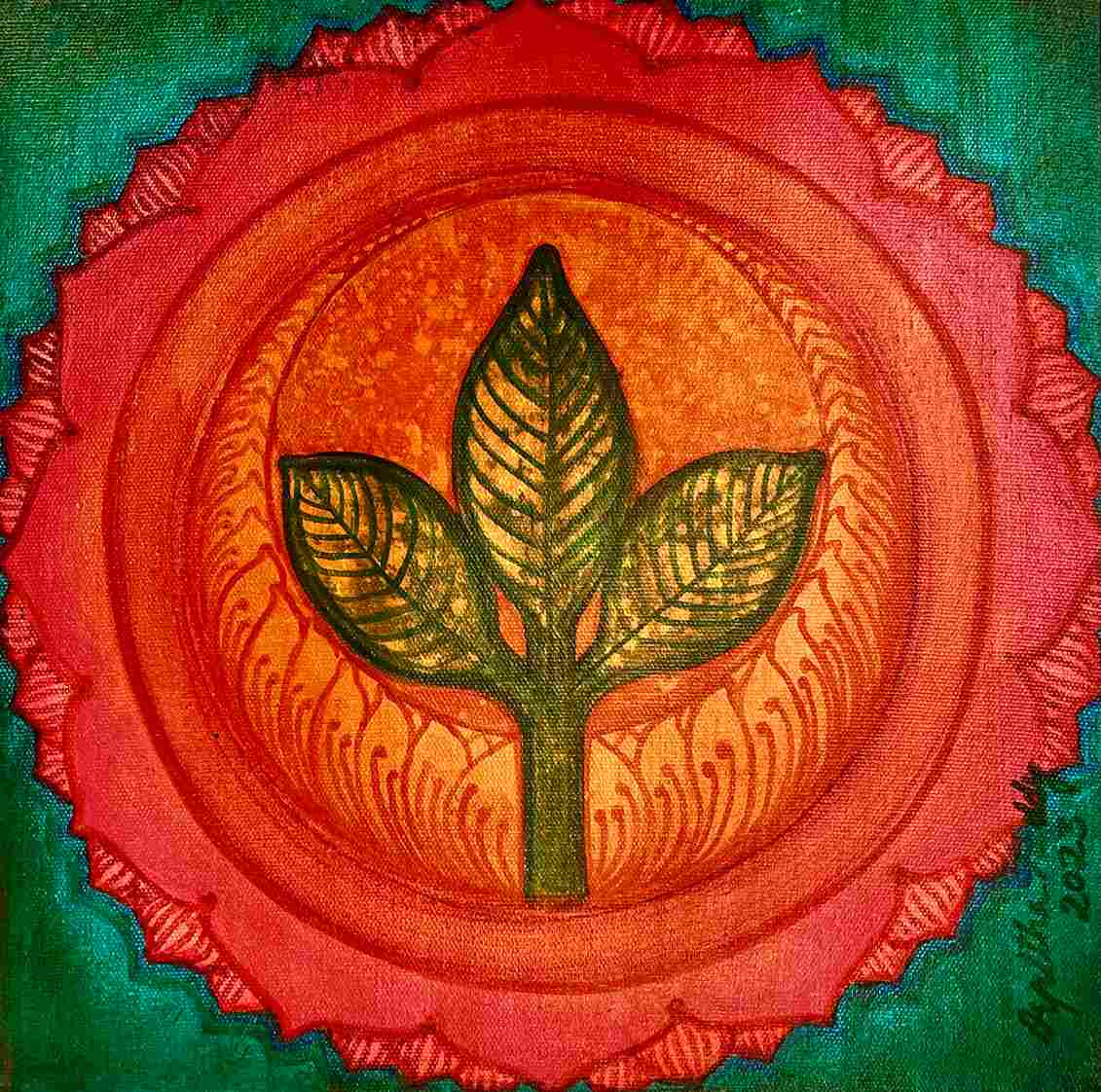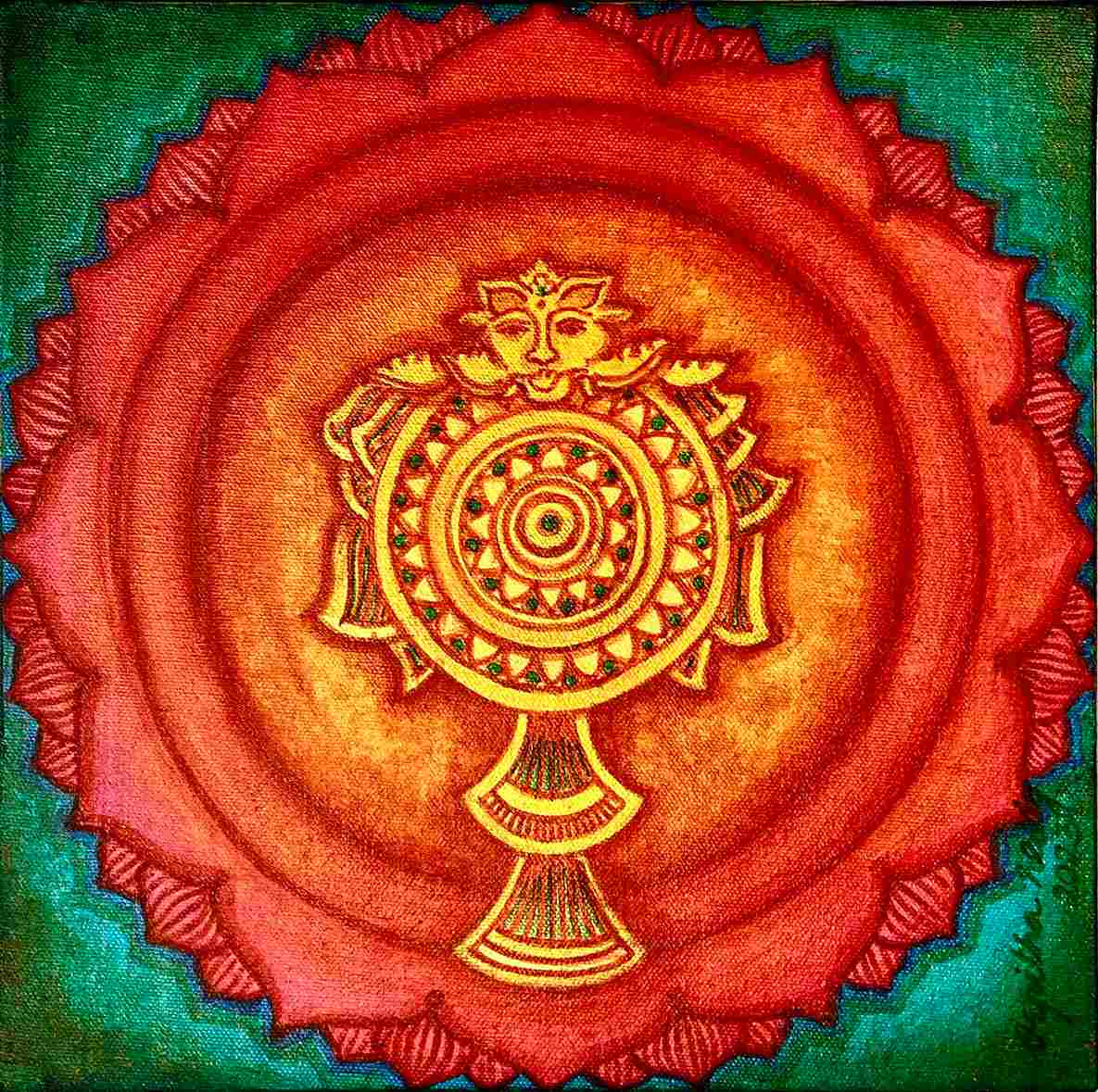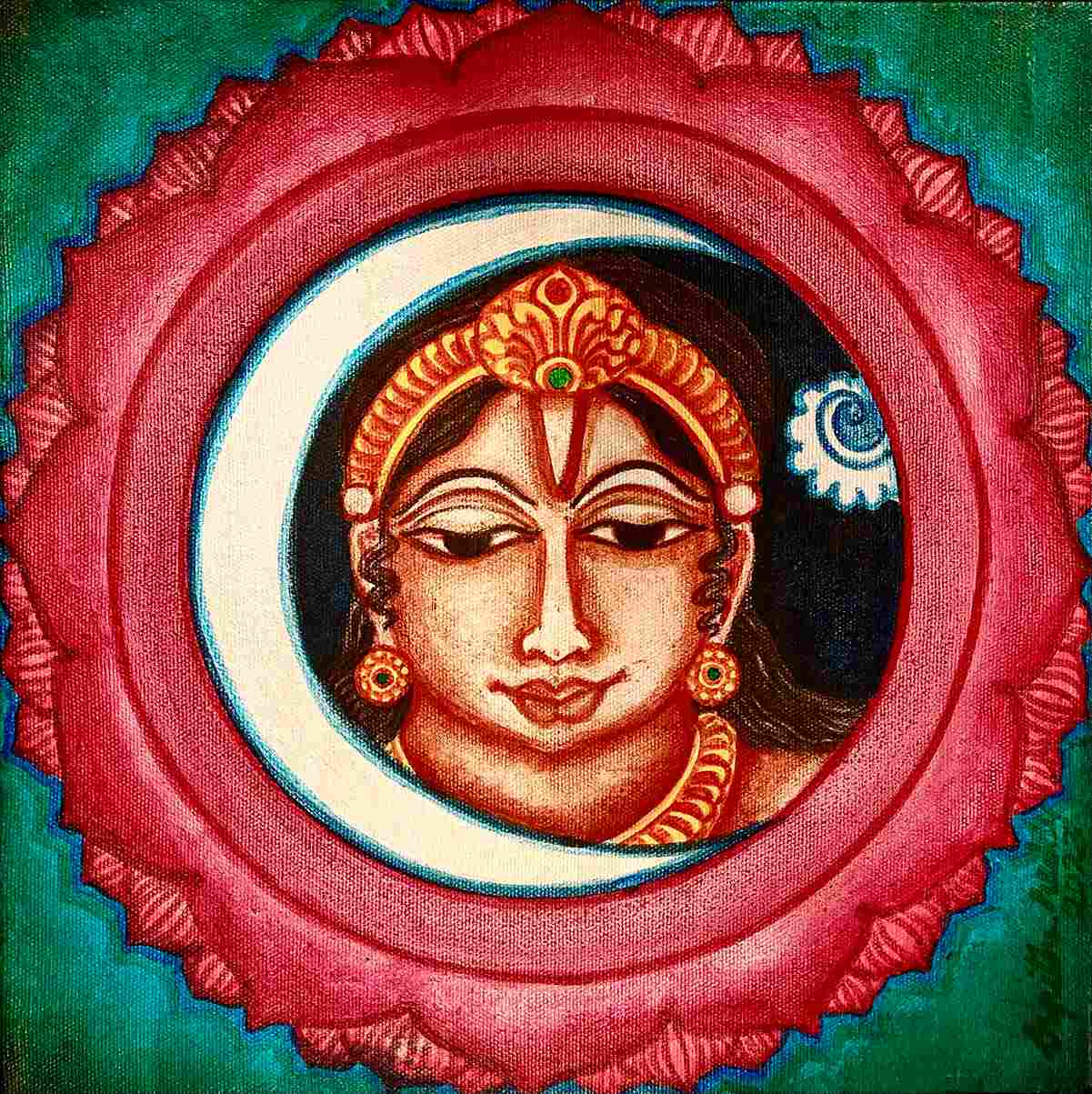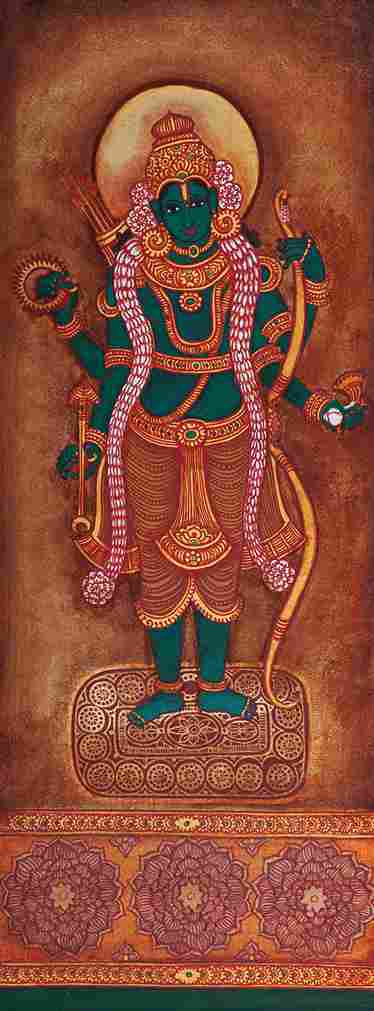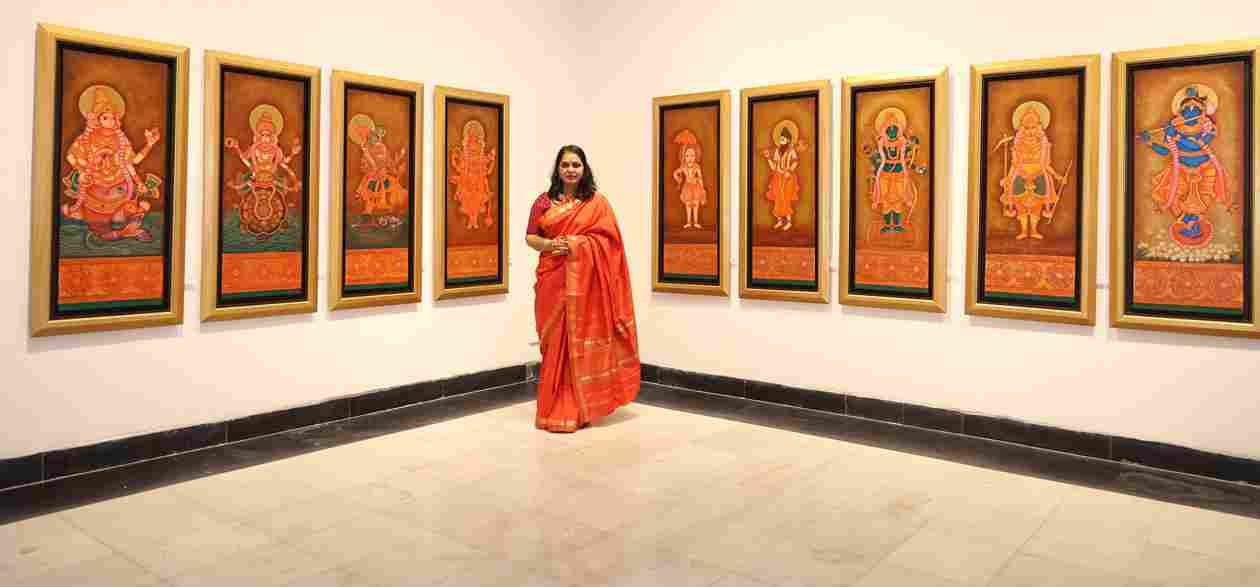Much more than Kalamkari and Kerala murals to Arpitha Reddy art at Delhi
New Delhi / October 22, 2023
New Delhi, Oct 22: The techniques differ, so do the styles. Yet the intricacy in the patterns of Kerala murals appealed to Arpitha Reddy as a youngster touring the coastal state as much as hand embroidery had wooed her as a child growing up in Hyderabad. Eclecticism worked, and a solo exhibition on in the national capital showcases that faculty of the painter.
The week-long Vishwatma show underscores Arpitha’s involvement in a range of visual arts. That includes the brushes she has had with the mirror work of her parents’ Nalgonda area known for its mix of Telugu and Mughal cultures, to what she learned while mastering in fine arts at a Bhopal college upcountry, to the lessons she took in traditional frescoes under tutors at the institute in Guruvayur later in life.
“Traditional arts have added to my skills. They enable me to go for linear imageries, lit up by thin application of glazing colours,” reveals the artist at the October 19-25 show of 50 works curated by scholar-critic Uma Nair. “Definitely formal learning at college helps me understand space and colours to give me a perspective,” adds the artist, noting similarities with some of the traditions familiar to her, starting with those taught by her mother Bharathi Reddy.
Uma concurs, noting that training in art colleges has lent Arpitha a broad vision about art: western and eastern, conventional and contemporary. “Yet a fair degree of familiarity with a traditional school, like the temple murals, can sharpen one’s skills because they deal with inner faith,” she notes. “The ethos of Hinduism propels a lot of search for personal progression through art because everything is born of bhava (emotion) and bhakti (devotion).”
A pan-India take on the ancient visual arts prompt Arpitha, 53, to go for certain compare-and-contrast exercise. For instance, the Phad scroll paintings of Rajasthan maintain a colour balance that is close to the five-hued (Panchavarna) Kerala murals, she says, trailing off to her initial sight of the temple frescoes in ‘God’s Own Country’ down the peninsula.
It was during a trip to Kochi in 1997 Arpitha stumbled upon a Kerala mural for the first time. At the 1545-built Dutch Palace in suburban Mattanchery, the vibrancy of the huge panels of frescoes bowled her over as an alumna of the JNTU College of Fine Arts, Hyderabad. A couple of years later, a young Kerala muralist happened to come to Bhopal, where Arpitha was living as a mother of two with her bureaucrat-husband Gopal Reddy. The Indira Gandhi Rashtriya Manav Sangrahalay had brought in K.U. Krishnakumar of Guruvayur’s Institute of Mural Painting for a workshop. Arpitha joined the week’s course, getting to know more about both the theory and application of Kerala murals. “I deeply fell in love with the art.”
Later, into this century, Arpitha got more opportunities to visit Kerala. Be them to Kottayam or Thrissur, she would learn more about the state’s temple murals and, of course, ensure meaningful stays at the Guruvayur institute, where its first-batch student Krishnakumar had become the principal. On one such trip, veteran artist A. Ramachandran’s book, The Abode of Gods, enabled Arpitha to widen and deepen her concepts about the state’s temple paintings.
Glimpses of that exposure find place at Vishwatma , concluding this Wednesday and is open from 11 a.m. to 7 p.m. Arpitha is influenced by the “fascinating exclusiveness” of Kerala murals, according to (late) art historian Vijayakumar Menon. She has employed well the genre’s “colour formula, figuration, ornamentation, motifs, stylised gestures and postures, crowded compositions and meticulous shading”, he notes in a preface to her 2017 Mumbai show Udbhavam. That was at the prestigious Jehangir Art Gallery, where too Uma curated Arpitha’s Vasundhara show earlier this year (February 14-20).
Sums up Arpitha: “Some of my figures are like Chola bronzes dressed in Kerala murals.” And adds: “Even with Odisha’s Patachitra, adding a white-dotted finishing akin to the ornamental manimala of Kerala murals can help focus on the main event and enhance its beauty.” To Uma, “Apritha has the flair to study all what she has seen, and absorb them into her aesthetics.”
The Kerala-style murals form part of the singular studies at Vishwatma, which chiefly exhibits three segments: Namam, Dashavatara and Sumangala. Overall, the show takes forward the aesthetics of the subcontinent’s frescoes by re-creating plots and figures from mythology.
